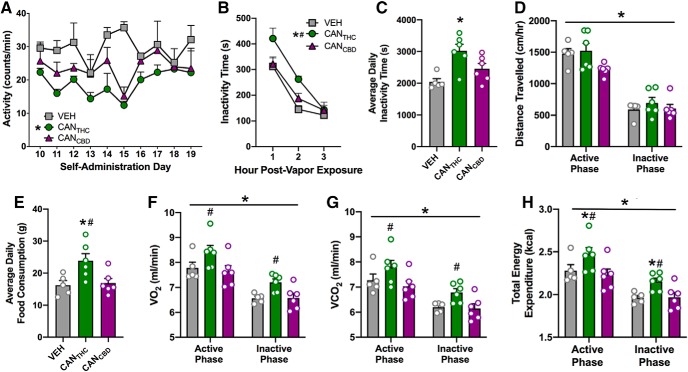Figure 4.
Self-administration of THC-rich cannabis vapor produces locomotor and metabolic alterations. A, Radio telemetry recordings of within-session locomotor activity (counts/min) over the final 10 d of self-administration in a subset of CANTHC, CANCBD, and VEH self-administering rats (n = 2–3/group). B, Home cage activity measured as total time spent inactive during the 3 h immediately following CANTHC, CANCBD, or VEH vapor self-administration. C, Total daily inactivity time in CANTHC, CANCBD, and VEH vapor self-administering rats. D, Mean daily distance traveled in the home cage during the active and inactive phases in CANTHC, CANCBD, or VEH vapor self-administering rats. E, Mean daily food consumption (grams) in CANTHC, CANCBD, or VEH vapor self-administering rats. F, Mean oxygen consumption (VO2) and (G) mean carbon dioxide consumption (VCO2) during the active and inactive phase in CANTHC, CANCBD, and VEH self-administering rats. H, Mean energy expenditure (kcal/h) during active and inactive phases of rats trained to self-administer CANTHC, CANCBD, or VEH vapor. All values are presented as averages over the final 10 d of self-administration training. n = 5–6/group. p ≤ 0.05. *Significant differences between CANTHC and VEH groups. #Significant differences between CANTHC and CANCBD groups.

